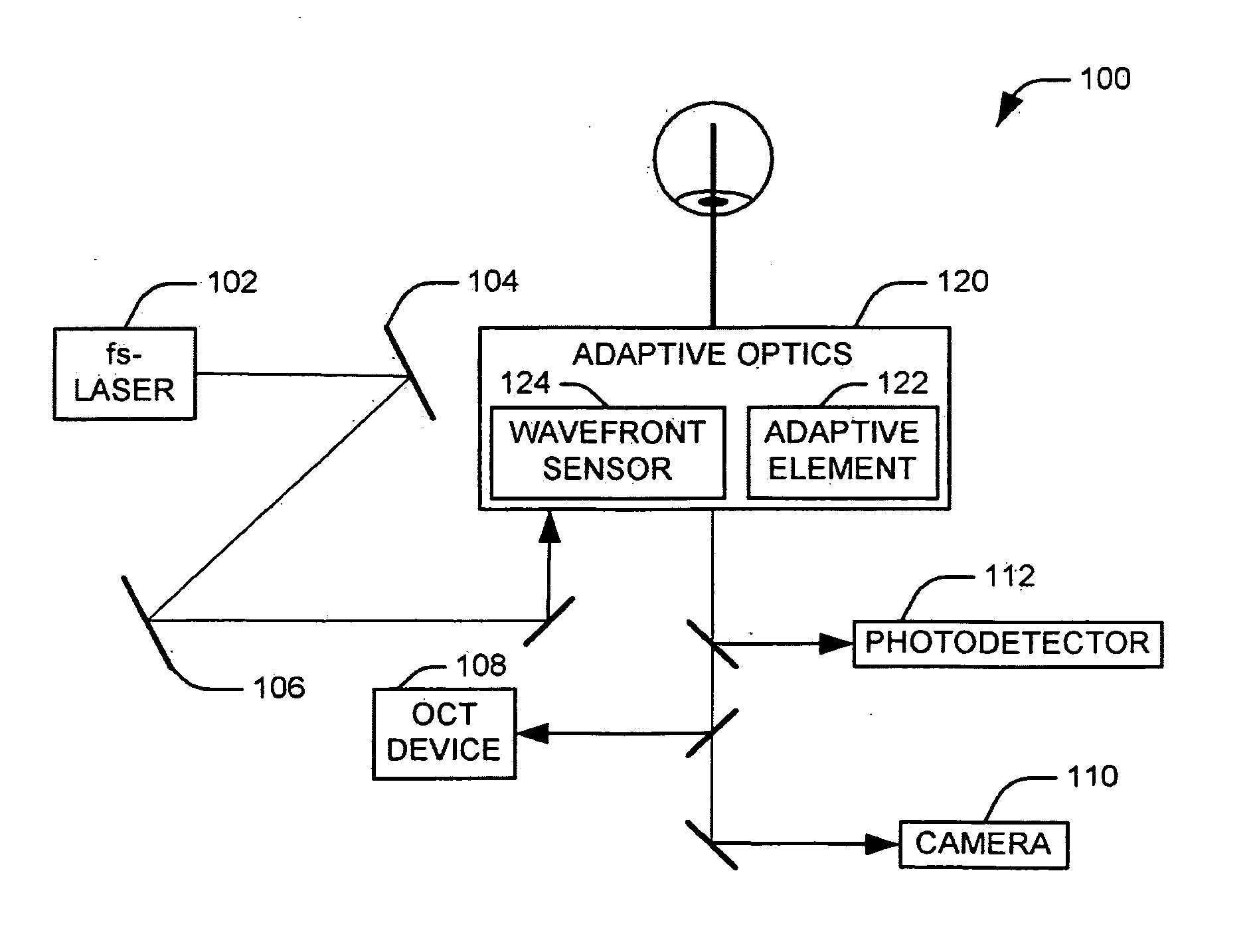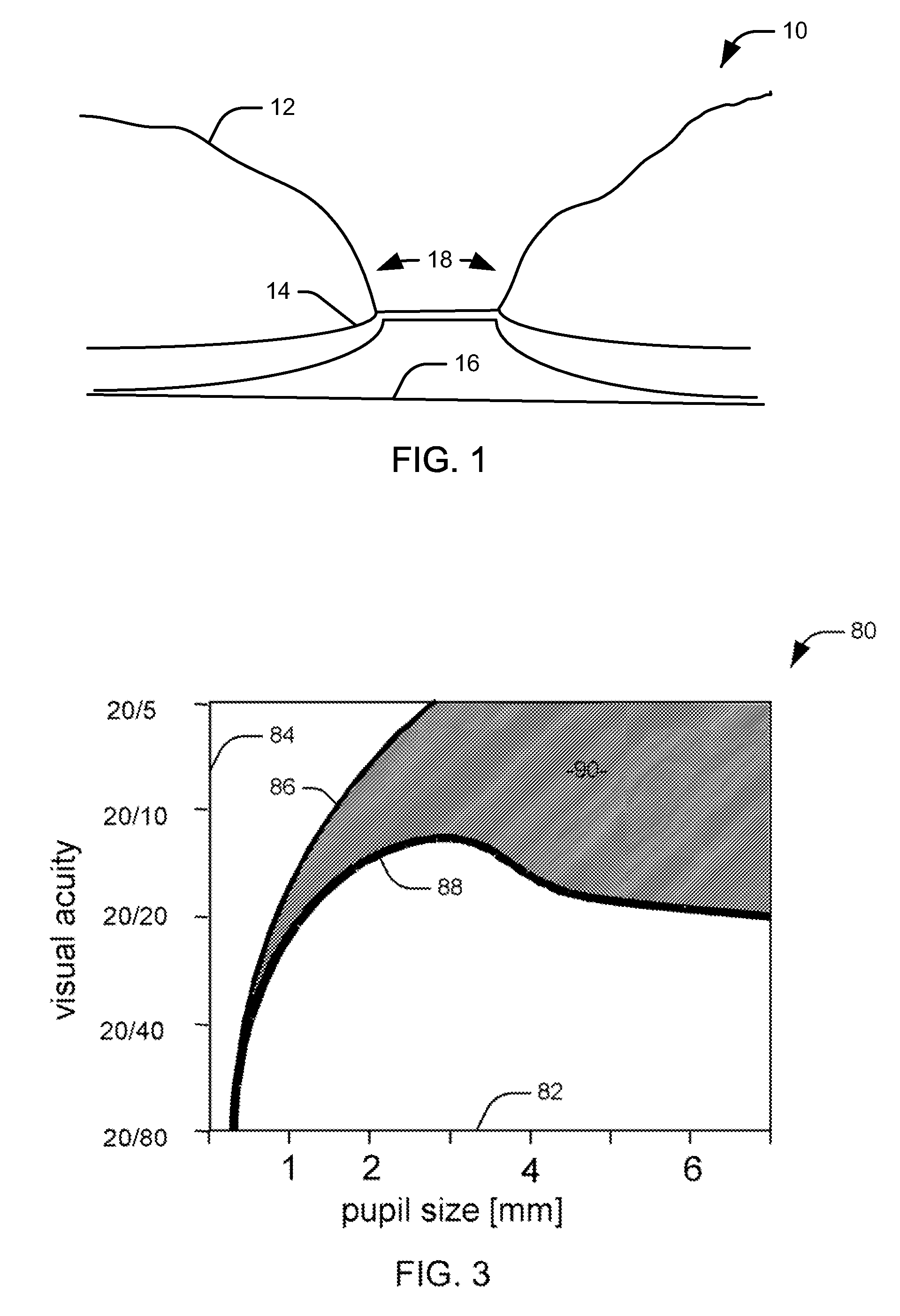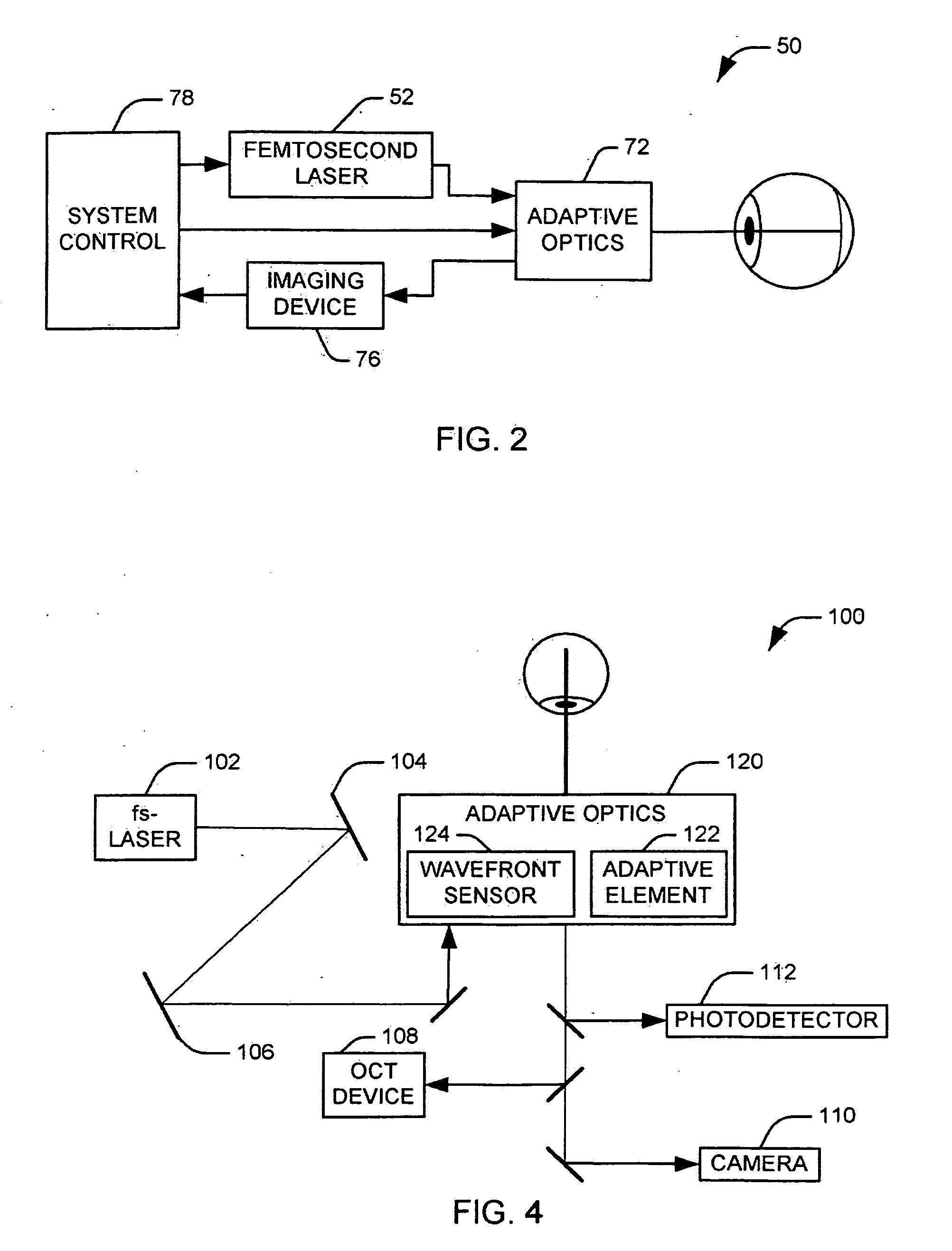Precise disruption of tissue in retinal and preretinal structures
a tissue disruption and retinal technology, applied in medical science, laser surgery, optical radiation measurement, etc., can solve the problems of high incidence of cataract formation, significant post-operative morbidity in this procedure, retina damage as well as retinal detachment, etc., to mitigate the effects of optical aberration and reduce dispersion and aberration
- Summary
- Abstract
- Description
- Claims
- Application Information
AI Technical Summary
Benefits of technology
Problems solved by technology
Method used
Image
Examples
Embodiment Construction
[0014]In accordance with an aspect of the present invention, systems and methods are provided for precisely disrupting preretinal and retinal tissue via transcorneal, ultra-short duration laser pulses. Specifically, the claimed systems and method precisely focus transcorneal laser pulses directed at the posterior portion of the eye to minimize damage to the retina from a given pulse, limiting post-surgical morbidty and the incidence of cataracts. This can be accomplished by using a high intensity, short duration laser pulse, on the order of femtoseconds, preferably between 10 and 1000 femtoseconds, and adaptively correcting the pulse for defects within the eye via adaptive optic elements.
[0015]FIG. 2 illustrates a system (50) for precisely applying transcorneal laser pulses to tissue at a target location. The laser pulses are produced by a femtosecond laser (52) that is operative to produce ultra short, high intensity laser pulses. In one implementation, the femtosecond laser is ope...
PUM
 Login to View More
Login to View More Abstract
Description
Claims
Application Information
 Login to View More
Login to View More - R&D
- Intellectual Property
- Life Sciences
- Materials
- Tech Scout
- Unparalleled Data Quality
- Higher Quality Content
- 60% Fewer Hallucinations
Browse by: Latest US Patents, China's latest patents, Technical Efficacy Thesaurus, Application Domain, Technology Topic, Popular Technical Reports.
© 2025 PatSnap. All rights reserved.Legal|Privacy policy|Modern Slavery Act Transparency Statement|Sitemap|About US| Contact US: help@patsnap.com



